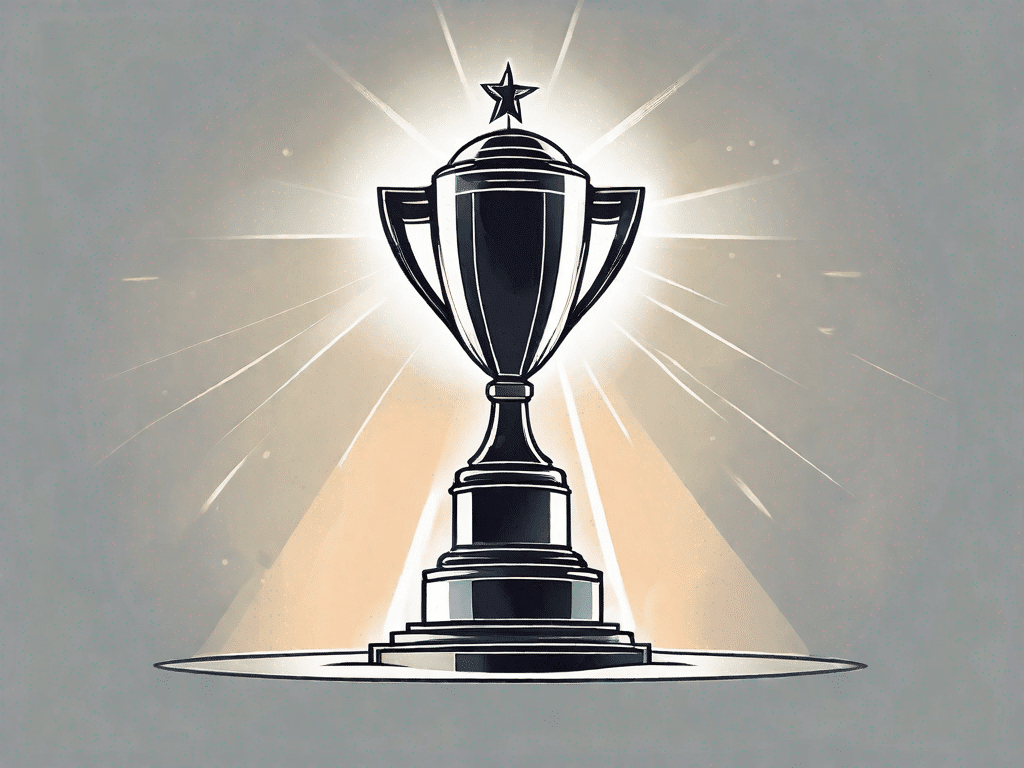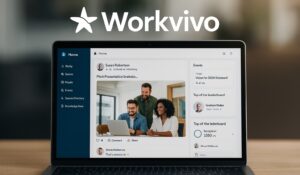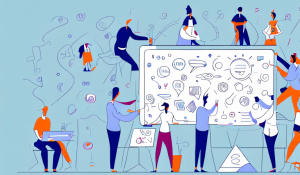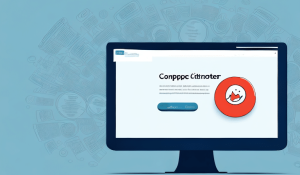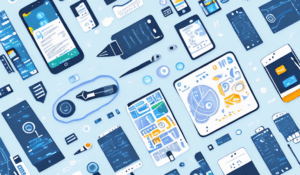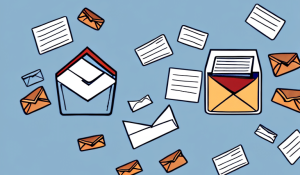Employee recognition programs and employee rewards programs are no longer a nice-to-have—they’re essential for building a motivated, loyal, and high-performing workforce. These employee reward and recognition programs don’t just make employees feel good. Data shows they reduce turnover, drive engagement, and fuel productivity. In fact, companies with formal recognition programs experience 31% lower turnover and are 12x more likely to achieve strong business outcomes.
This guide explores the importance, benefits, and types of recognition programs, with real examples and strategies you can apply to your own workplace.
👉 To understand the full landscape, check out our comprehensive guide to employee recognition software.
👉 If you’re evaluating tools, explore HubEngage’s Employee Recognition Platform to see how recognition can be unified and scaled.
What Are Employee Recognition Programs?
Employee recognition programs are structured initiatives that acknowledge and celebrate employees’ contributions. They go beyond simple thank-yous, providing meaningful and often tangible rewards that make employees feel valued. Recognition can be monetary—like bonuses and gift cards—or non-monetary, such as extra vacation days, public shout-outs, or professional development opportunities. Effective employee recognition programs combine both types for lasting impact.
According to Nectar HR research, only about 53% of organizations currently have a formal recognition program in place, while the rest rely on ad‑hoc gestures. Yet those with structured programs see far higher employee engagement, job satisfaction, and retention outcomes compared to companies without them. This highlights why moving from informal, inconsistent recognition to a modern employee recognition program is critical for business success.
👉 For ideas on specific rewards, check out our guide to employee reward ideas.
Types of Employee Recognition Programs
Here are 10 proven recognition program formats you can adapt to your organization, ordered from easiest to launch to those that require more planning and budget:
- Length of Service Awards – Recognizes loyalty and long-term commitment at career milestones. These are simple to automate and can be run with minimal budget.
- Employee Spotlight Programs – Showcase team members through newsletters, intranets, or signage. These programs are low-cost and relatively easy to implement. 👉 See spotlight examples.
- Peer-to-Peer Recognition – Encourages employees to celebrate each other’s contributions. Easy to set up digitally and inexpensive, though it does require designing categories or values employees can tag.
- Spot Awards – Instant, real-time recognition for going above and beyond. 👉 Learn more in our spot awards guide.
- Team Recognition – Rewards collective achievements to promote collaboration and camaraderie.
- Customer-Driven Recognition – Collects and highlights customer feedback on exceptional service.
- Creative Awards – Fun, personalized awards (like “Problem Solver of the Month”) that bring personality into recognition. 👉 Explore more creative award ideas.
- Employee of the Month/Quarter/Year – Celebrates consistent high performers, boosting motivation through prestige and visibility.
- Wellness & Lifestyle Rewards – Tie recognition to well-being initiatives like gym memberships or wellness credits. These often require more budget and vendor partnerships.
- Monetary Incentive Programs – Use bonuses or financial rewards to directly link recognition with performance. These can be highly motivating but typically involve the highest costs and careful planning. 👉 Learn more about monetary rewards in the workplace.
Program Complexity & Budget Ladder
Organizations can scale recognition programs based on resources. Many hesitate because they assume recognition always requires a big budget, but money isn’t everything. Even simple, no‑cost gestures—like a CEO publicly saying, “John Doe went above and beyond to get this done”—carry tremendous weight and help employees feel seen by leadership.
- Low-cost, easy-to-launch: birthdays, work anniversaries, new hire welcomes, peer-to-peer kudos, spotlights.
- Moderate effort/budget: team recognition events, customer-driven awards, creative themed awards.
- Higher investment & planning: wellness programs, monetary incentives, large-scale employee of the year celebrations.
By starting small with recognition that shines a spotlight on employees, and gradually layering in more structured or resource-heavy initiatives, companies can build a recognition culture without overwhelming budgets or teams.
💡 Cost-neutral recognition tactics: Studies show that even non-monetary recognition drives measurable results. For instance, research from OC Tanner found that 65% of employees would work harder if they were simply recognized by management. Public praise during meetings, a personal note from a leader, or a CEO shout-out in a company-wide email can boost engagement without spending a dime.
Quick Comparison: Low/No-Cost vs Budget-Heavy Programs
| Program Type | Example | Budget Level | Ease of Implementation | Impact |
|---|---|---|---|---|
| No-Cost/Low-Cost | Peer-to-peer kudos, service anniversaries, birthday shout-outs, CEO recognition in town halls | Minimal | Easy to automate or self-serve | Builds culture, high engagement |
| Moderate Investment | Team recognition events, customer-driven awards, creative themed awards | Moderate | Requires some planning and resources | Strengthens collaboration and morale |
| Higher Investment | Wellness stipends, large monetary bonuses, Employee of the Year galas | Higher | Requires budget approvals, vendor support | Strong motivator, big retention driver |
👉 For a structured approach, see how employee reward systems can align with your overall recognition strategy.
Implementing a Successful Program
Launching a recognition program doesn’t have to be overwhelming. The most effective approach is to start small with low-cost, easy-to-manage initiatives and then expand over time. You don’t need to figure out everything on day one—what matters is creating early wins, involving leadership and managers, and gradually adding structure as the program matures.
This 5-step guide is designed to help organizations of all sizes implement effective employee recognition and rewards programs:
Action Plan
- Start Small: Begin with simple, low-budget initiatives such as birthday shout-outs, service anniversaries, or peer-to-peer kudos (aligning with the low-cost examples in the budget ladder above).
- Involve Leadership Early: A personal note or public recognition from leaders can have a disproportionate impact. Their visible involvement sets the tone.
- Empower Managers: Train managers to recognize consistently and use recognition moments as leadership development opportunities.
- Layer in Complexity: Over time, add structured programs like team awards, creative recognition campaigns, or customer-driven recognition (matching the moderate investment tier).
- Scale with Technology: As participation grows, implement tools that automate recognition and provide analytics to track impact (needed for higher investment programs).

Key Elements
- Clear objectives tied to company goals
- Transparency and fairness in recognition
- Frequent and timely acknowledgments
- Multiple channels (mobile apps, intranet, email, digital signage) to reach every employee
Common Pitfalls
- Inconsistent recognition efforts
- Poor communication about program criteria
- Forgetting the importance of peer-to-peer recognition
👉 See how companies balance intrinsic and extrinsic rewards.
👉 Use our employee recognition survey template to measure and refine program success.
The Impact of Recognition on Morale and Culture
Recognition programs do more than provide perks—they shape culture and deliver measurable impact backed by research:
- Engagement: Employees who feel appreciated are more likely to be engaged, productive, and satisfied. In fact, Gallup research shows that employees who receive regular recognition are nearly 5x more likely to feel engaged at work.
- Collaboration: Recognition fosters a sense of belonging, teamwork, and trust.
- Well-being: Appreciated employees report less stress and burnout. According to Quantum Workplace, organizations with strong recognition cultures are 12x more likely to have strong business outcomes and significantly lower burnout.
- Retention impact: Nectar HR notes that employees who feel adequately recognized are 56% less likely to be job hunting.
👉 Learn more about the power of workplace recognition.
Business Impact of Recognition Programs
Recognition programs don’t just boost morale—they create measurable business value. From reducing costly turnover to improving productivity, culture, and customer satisfaction, a well-designed program touches both people and performance outcomes.
Employee Recognition and Retention
- Lower Turnover: Recognition reduces voluntary exits. Replacing an employee can cost up to 200% of their annual salary when factoring in lost productivity, recruitment, and training costs.
- Stronger Loyalty: Employees who feel valued are more likely to stay and grow with the company.
- Commitment to Growth: Programs that recognize service and development encourage employees to invest in their careers with you.
👉 For a deeper dive, see our guide on employee benefits programs.
Business & Performance Impact
- Higher Productivity: Motivated employees work harder, innovate more, and improve customer service. Gallup has found that business units with highly engaged employees achieve 21% greater profitability.
- Better Customer Satisfaction: According to Aon Hewitt, organizations with high engagement see 2x higher customer loyalty and increased repeat business.
Together, these stats underscore that recognition isn’t just about morale—it’s a direct lever on both retention and financial performance.
Recognition Programs as Culture & Leadership Builders
Recognition is not just about rewarding high performers—it’s also a powerful tool for shaping culture, training managers, and surfacing future leaders.
- Driving Values into Daily Work: Recognition programs can highlight behaviors that reinforce company values.
- Identifying Future Leaders: Recognition data can reveal emerging leaders. Engagement platforms can surface these trends with analytics.
- Training Managers: Recognition equips managers to act as communicators and culture carriers.
- Manager as Messenger: Edelman research shows employees are 2.5x more likely to trust their direct manager than the CEO when it comes to communication.
- Mentorship & Sponsorship: Recognition creates visibility for high-potential employees.
- Emotional Intelligence in Practice: Gallup reports that when managers show emotional intelligence, turnover drops by 51%, well-being improves by 68%, and productivity rises by 23%.
Examples of Successful Recognition Programs
Many leading companies stand out with their successful employee recognition programs and creative employee recognition programs:
- JetBlue: A 3% rise in retention for every 10% increase in recognition.
- Specsavers: Personalized handwritten thank-you notes from leadership.
- Heineken: Boosted recognition participation from under 2% to over 50% of its workforce.
- ICF: 90% of employees received recognition in one year; eCard usage grew by 57%.
- CrowdStrike: Generated 2,000+ kudos messages and 6,000+ participants during Employee Appreciation Week.
- SAS Institute: With a strong recognition and culture strategy, turnover is just 3–5% (versus 20–25% industry average).
- Modern Tech Firms: Peer shout-out channels and gamified platforms to engage hybrid workforces.
👉 For more inspiration, see top Employee Appreciation Day ideas.
Choosing the Right Software to Grow With You
Recognition needs to work at every stage—from small companies with tight budgets to larger organizations with complex needs. The right software should let you start simple and cost-effectively, then scale as you grow.
👉 Explore our guide to the best employee recognition software to understand the landscape.
👉 If you’re ready for a solution, check out HubEngage’s Employee Recognition Platform. It’s built with flexibility to help small businesses start fast and larger enterprises scale recognition across channels.
Final Thoughts
Throughout this guide, we’ve covered what recognition programs are, different types and examples, how to start small and scale with budget, their impact on morale, retention, business performance, culture, and leadership development, and why flexible software matters. Recognition programs aren’t one-size-fits-all. The best employee recognition programs are tailored to company culture, consistently executed, and backed by data. By blending simple gestures with formal systems—and the right technology—you can create a motivated workforce that drives business success.
Ready to elevate your recognition strategy?
👉 See a demo of HubEngage’s Recognition Hub today.
FAQs
What is an employee recognition program?
An employee recognition program is a structured initiative designed to acknowledge, celebrate, and reward employees for their contributions and achievements.
Do employee rewards programs have to cost a lot of money?
No. Recognition can be simple and cost-neutral. Public praise, a personal note, or a shout-out from leadership are all impactful and budget-friendly.
How do employee reward and recognition programs impact retention?
Rewards and recognition can reduce turnover by up to 31%. Employees who feel recognized are 56% less likely to be job hunting.
Can recognition programs work for small businesses?
Yes. Small businesses can start with easy, low-cost ideas like birthdays, service anniversaries, or peer kudos. As they grow, software like HubEngage makes it easy to scale employee recognition programs for small companies.
What role do managers and leaders play in recognition programs?
Managers drive 70% of the variance in employee engagement. When leaders consistently recognize employees, trust and engagement increase dramatically.
How do I measure the success of a recognition program?
Track participation rates, recognition frequency, employee engagement scores, and turnover rates. 👉 Use our employee recognition survey template to measure effectively.
What are some examples of creative recognition programs?
Creative employee recognition programs include themed awards, peer-nominated shout-outs, customer-driven recognition, and spotlighting employees in newsletters or on digital signage.

